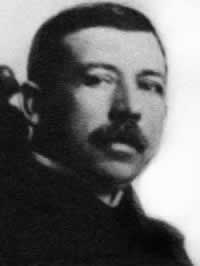John Martin Poyer | |
|---|---|
 | |
| Governor of American Samoa | |
| In office March 1, 1915 – June 10, 1919 | |
| Preceded by | Charles Armijo Woodruff |
| Succeeded by | Warren Jay Terhune |
| Personal details | |
| Born | 1861 Indiana, U.S. |
| Died | May 12, 1922 (aged 60–61) Washington, D.C. |
| Resting place | Arlington National Cemetery |
| Spouse | Emma Porter |
| Alma mater | United States Naval Academy |
| Occupation | Naval officer |
| Military service | |
| Allegiance | |
| Branch/service | |
| Years of service | 1879–1906, 1915–1919 |
| Rank | |
| Awards | Navy Cross |
John Martin Poyer (1861 – May 12, 1922) was the Naval Governor of American Samoa, from March 1, 1915, to June 10, 1919. He held the longest term of any American governor appointed over the territory by the United States Government. A Naval Academy graduate, Poyer served in numerous positions and retired in 1906 on account of failing health; however, the navy recalled him to service in 1915 to serve as governor. During the 1918 flu pandemic, Poyer quarantined the territory to stop the spread of the pandemic to American Samoa. Because of his actions, no deaths occurred in American Samoa, and he received the Navy Cross. Upon his final retirement, Poyer had reached the rank of commander.
Poyer served as Governor of American Samoa during World War I. While the territory was not directly involved in the war, Poyer focused on enhancing the education and public health systems. In his honor, a Junior High School was named after him. He arrived in American Samoa shortly after a devastating hurricane that destroyed much of the development in the Manuʻa Islands. In 1915, Poyer evacuated over 50% of Manua’s population to Tutuila to await the harvest of new crops, which resulted in many residents choosing to remain in Tutuila, significantly reducing Manua’s population. In 1918, a deadly influenza epidemic struck Western Samoa, killing one-fifth of the population on both Upolu and Savaiʻi. Governor Poyer implemented a strict quarantine on all incoming items from Western Samoa, with mail being delivered well outside the Pago Pago Harbor. This decisive action resulted in zero influenza casualties in American Samoa. Poyer was highly popular, and the Samoan people overwhelmingly wanted him to remain in office when his term ended.[1]
- ^ Sunia, Fofō Iosefa Fiti (2001). Puputoa: Host of Heroes - A record of the history makers in the First Century of American Samoa, 1900-2000. Suva, Fiji: Oceania Printers. Pages 109-110. ISBN 9829036022.